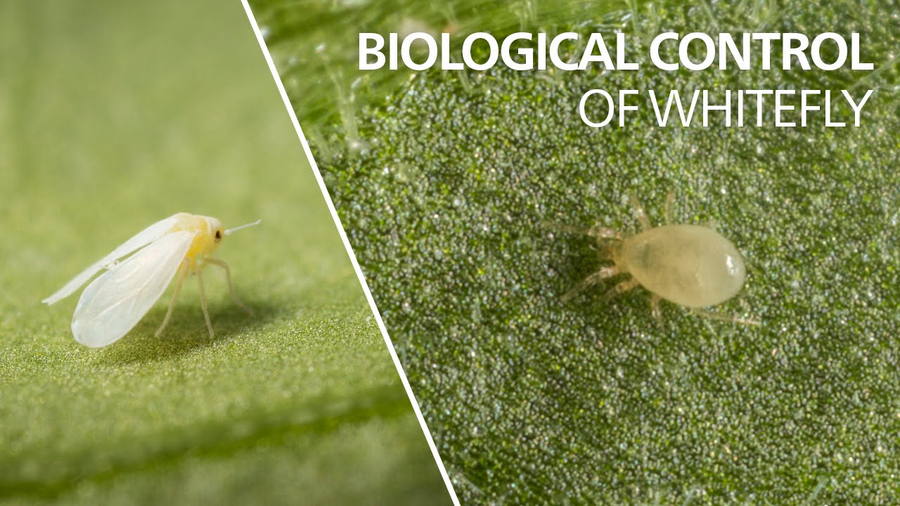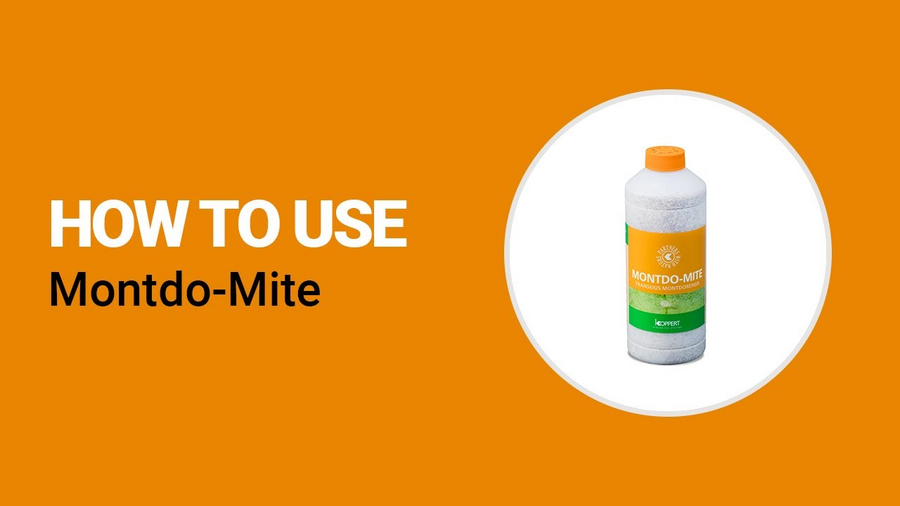
 RollerTrap Application for effective Mass trapping of various flying pests
RollerTrap Application for effective Mass trapping of various flying pests
Whitefly infestation can increase at lightning speed in your crop, but there’s no need to worry! Biological control is at the rescue. Koppert offers several biological solutions that you can use to Combat whiteflies. The following is a brief overview of the key allies in the fight against whitefly.
Predatory mites are known to control a variety of pests including spider mites, thrips, whitefly and fungus gnats. Some predatory mite species are specialized on particular pest targets (Spical, Spidex), while others are generalists (Swirski-Mite, Limonica, Montdo-Mite, Thripex, Macro-Mite), capable of tackling a wide array of pests.
They actively seek out their prey when introduced into an environment with pest infestations. Once they locate their target pests, predatory mites feed on them by piercing their prey's body and extracting their bodily fluids, causing their death. As predatory mites feed on pests, they also reproduce rapidly, increasing the population of beneficial mites. This population growth further enhances their pest control capabilities. Due to their population development, predatory mites not only reduce existing pest populations but also act as a deterrent to future infestations. The presence of beneficial mites can discourage pest outbreaks by creating an environment where pests are less likely to thrive.
Predatory mites are often used preventively before a pest is known to be present. Many growers use them year-round, like a ‘standing army’ designed to combat the whitefly. Predatory mites survive by eating other pests and pollen.
a) Amblyseius swirskii - Mode of Action
b) Transeius montdorensis (Montdo-Mite)
Parasitic wasps are small insects that play a crucial role in natural pest control. They are called "parasitic" because they lay their eggs inside or on harmful pest insects. These parasitic wasp larvae then develop inside the host insect, eventually killing it.
These wasps are highly specialized, with different species targeting specific pests. They are effective in reducing the population of harmful insects, making them valuable allies in horticulture and agriculture. Unlike chemical pesticides, parasitic wasps are natural and do not harm beneficial insects, animals, or the environment.
a) Eretmocerus eremicus – ERCAL
Mode of action
Adult female parasitic wasps parasitize the second and third larval stage of the whitefly. Additionally, host feeding also occurs. This involves the adult wasps feeding on the host’s body fluids, which can be important for their reproduction.
Mode of Action against whitefly:
Visual effect
Parasitized whitefly pupae turn yellow, the adult parasitic wasp can be seen clearly within the parasitized whitefly pupae shortly before it emerges.
3. Beneficial Microorganisms
Beneficial microorganisms, also known as beneficial microbes, are microscopic organisms that provide positive effects to their environment, including various biological systems and organisms. These microorganisms play a crucial role in biological pest control by effectively infecting and controlling harmful pests.
Beneficial microorganisms for pest control include fungi, bacteria and viruses that naturally occur in environments such as soil, water, and air. These microorganisms are harnessed for pest control through applications like biopesticides, where they are introduced to target pests, providing an eco-friendly alternative to chemical pesticides.
A. Entomopathogenic fungi
i) Lecanicillium muscarium - Mycotal
Lecanicillium muscarium is an insect pathogenic fungus that is used for the biological pest control of whitefly larvae with side effects on thrips larvae (when there is more humidity and in combination with a compatible adjuvant like Addit or Squad).
Mode of Action:
ii) Beauveria bassiana -Boveril
Beauveria bassianais an insect pathogenic fungus that is used for the biological pest control of adult whitefly with side effects on Thrips and Aphids as well.
Mode of Action: The conidia of the fungus germinate on the surface of the insect pest, penetrating its exoskeleton, colonizing it internally. The release of toxins inside the insect reduces its mobility until death. Insects colonized by the fungus become hard and covered by a powdery layer of conidia, visible to the naked eye in shades of white. The entire process takes place up to12 days after application, depending on climatic conditions.
4. Pest Monitoring and Trapping
Horiver is our trusted high-quality sticky trap that monitors pest insects like whitefly, thrips, fungus gnats and leaf miners. It is specially designed with a notch that makes it easy to place in the crop. Insect pests are attracted to the colour of the sticky trap and get caught in the glue. It also has grids that simplify counts when scouting.
How it works:
B. Rollertraps
Horiver Rollertrap is used for mass trapping of whiteflies, thrips, leaf miner and fungus gnats in hot spots or places where high pressure can be expected, such as along gables, ventilation windows and (other) draughty places
Insect pests are attracted to the colour of the sticky trap and get caught in the glue.













